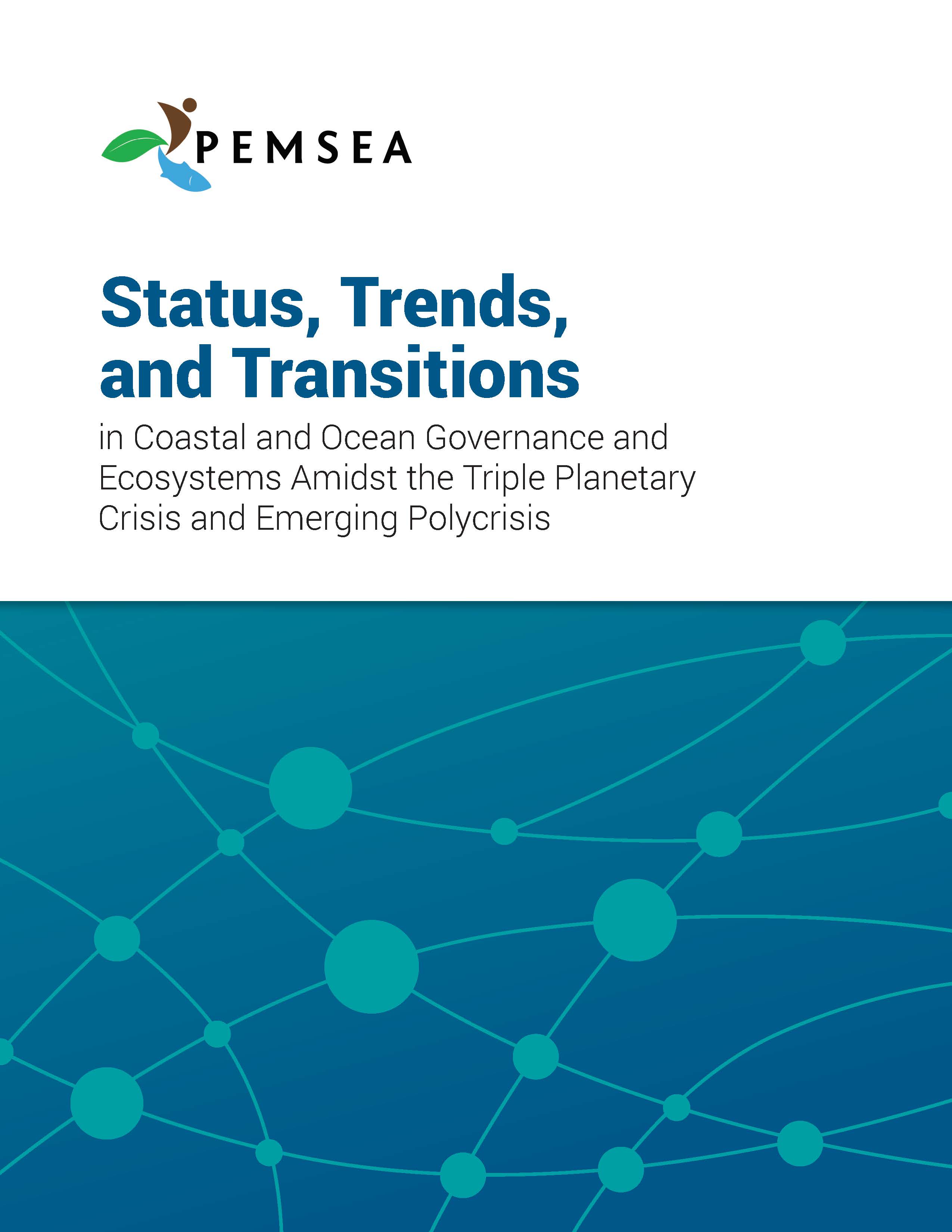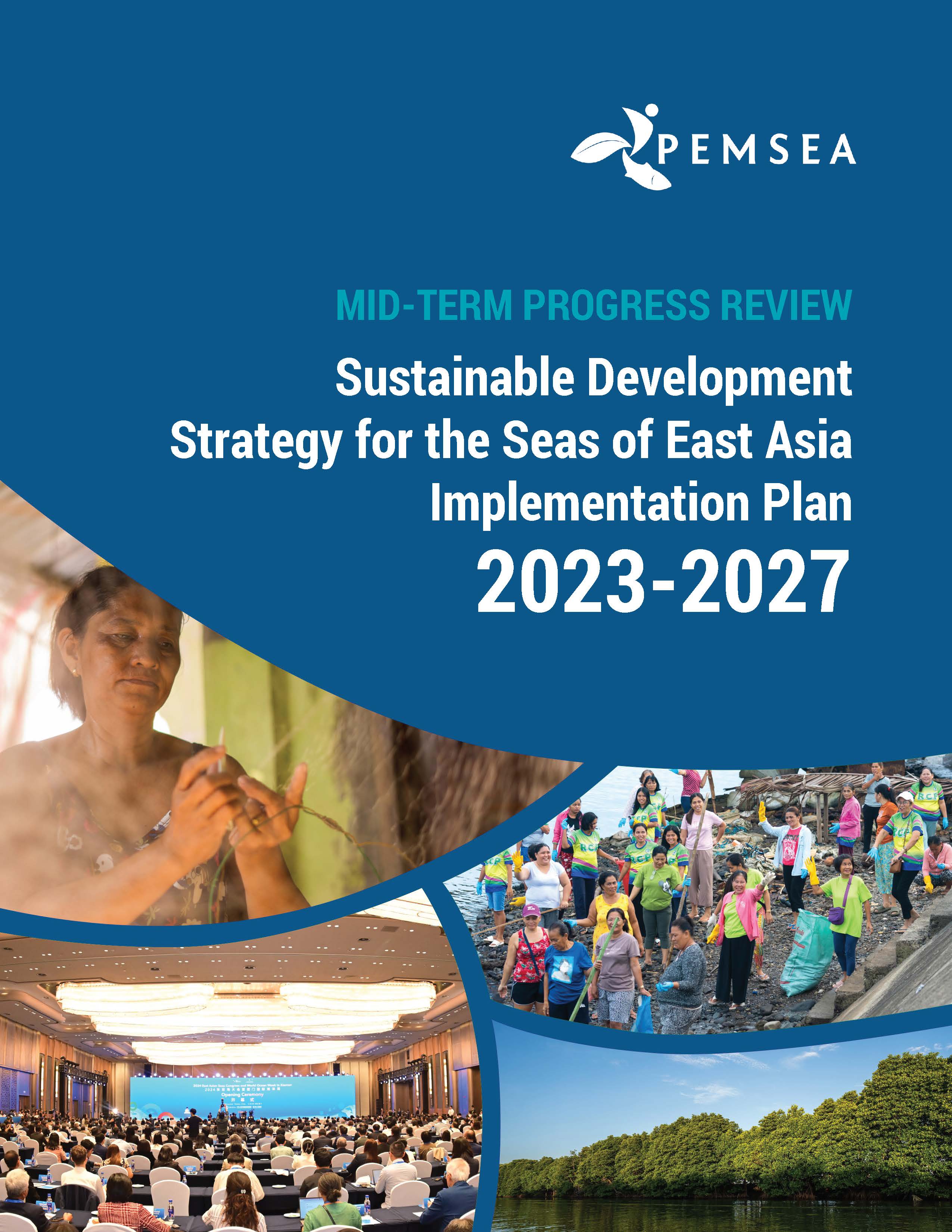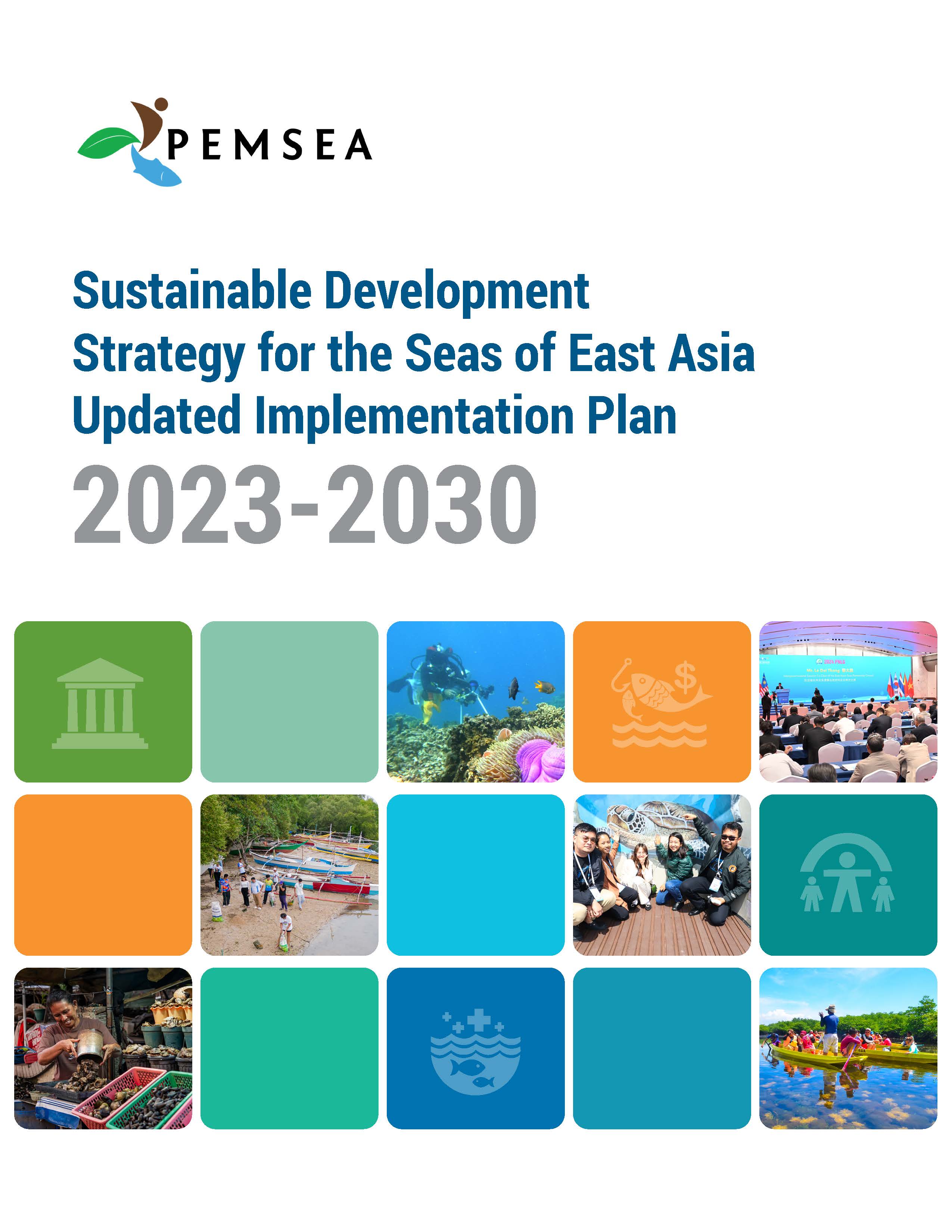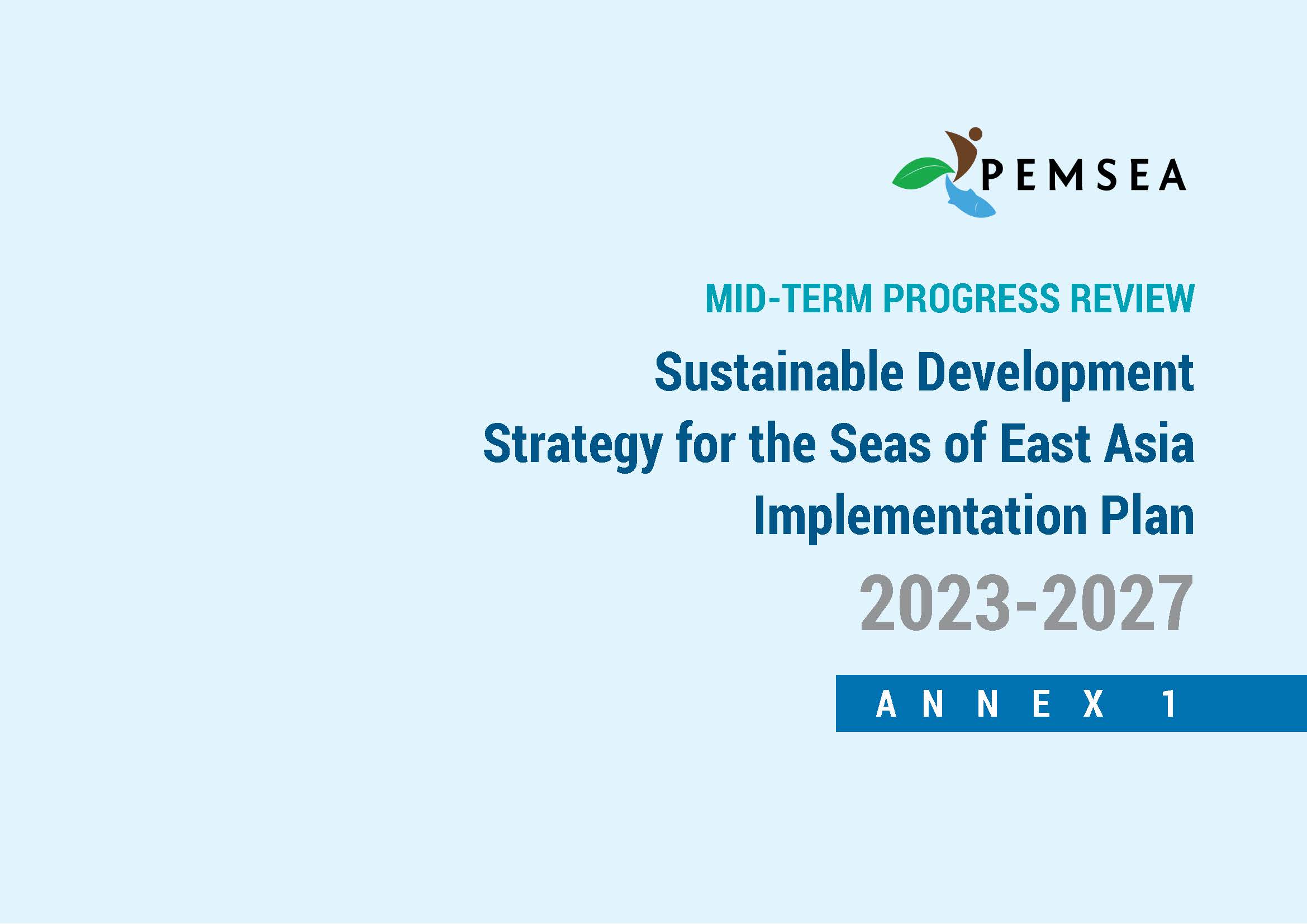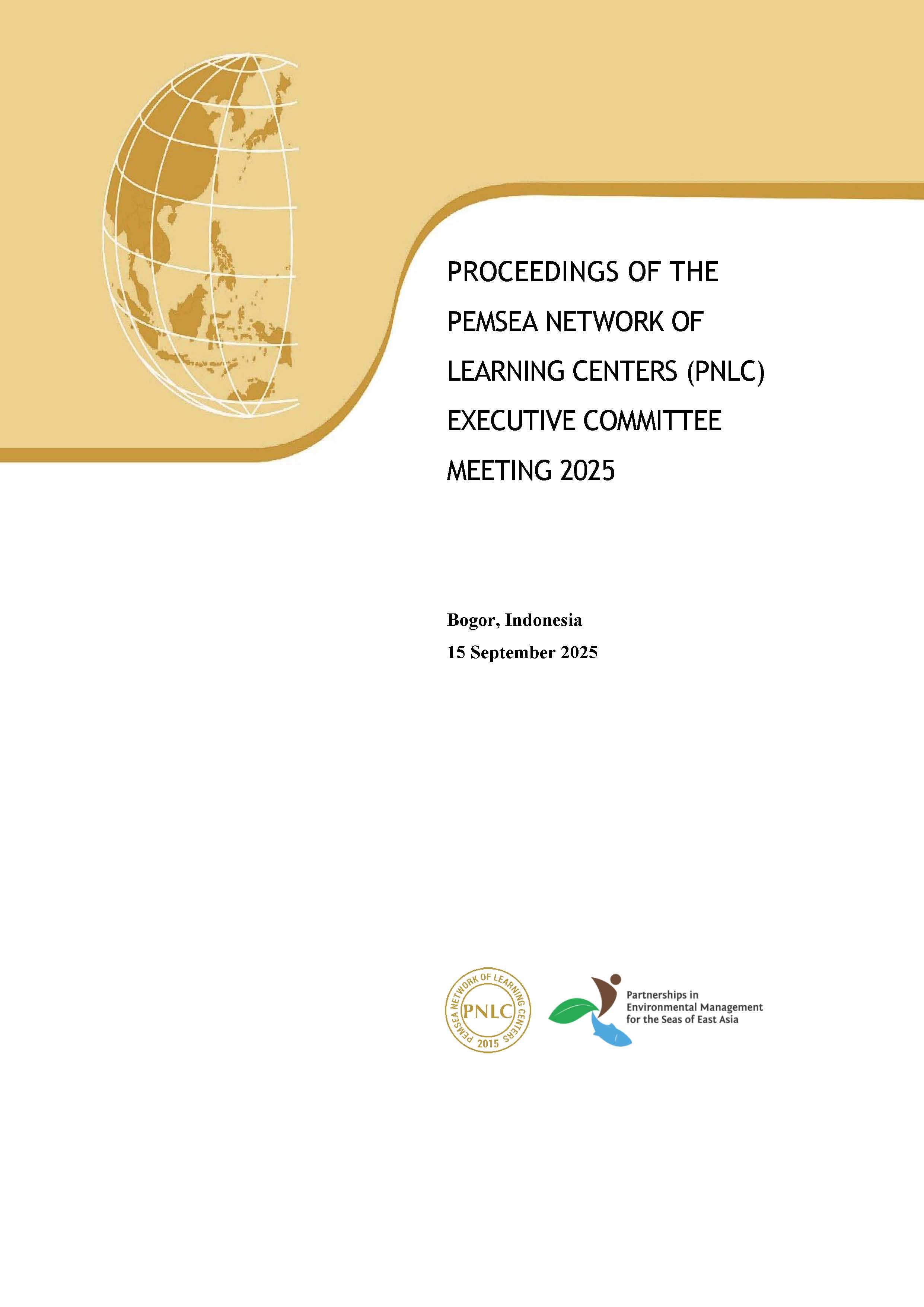
Breadcrumb
Regional Review: Implementation of the Sustainable Development Strategy for the Seas of East Asia (SDS-SEA) 2003-2011
PUBLICATION DATE:
Sunday, July 01, 2012
PUBLICATION TYPE:
Reports
STATUS:
Available
DESCRIPTION:
The SDS-SEA review process commenced in March 2010. All PEMSEA Country Partners and the majority of the Non-Country Partners participated in the process, which entailed: (a) a desktop review of progress and development in support of SDS-SEA objectives and targets in each participating country; (b) a survey of PEMSEA Non-Country Partners to identify initiatives that contribute, directly and indirectly, to SDS-SEA; (c) conduct of national inter-agency workshops to review and validate the country report, and to build consensus on priorities for SDS-SEA implementation in the medium term; and d) finalization of national SDS-SEA progress reports and preparation of an overall summary report for the region. The countries of the Seas of East Asia have recognized the severity of continuous degradation of their seas, coasts and estuaries upon which the region’s economies and millions of its inhabitants and economies depend. As a reflection of their concern, the governments crafted the Sustainable Development Strategy for the Seas of East Asia (SDS-SEA) in 2003, with the support of Global Environment Facility (GEF) and the participation of United Nations Development Programme (UNDP), the World Bank and 14 other international and regional organizations. The SDS-SEA identifies common threats as well as strategic action programs to reduce the impacts of natural and man-made hazards on coastal and marine resources, as well as the people, communities and economies of the region. There has been considerable progress and achievement on the part of participating countries, local governments and a host of collaborating organizations, programs and projects since the adoption of the SDS-SEA in 2003. The good news is that the region appears to be on track to achieving four major targets as spelled out in the Haikou Partnership Agreement (2006) and further elaborated in the Manila Declaration (2009) (Box 1). However, the bad news is that coastal and marine ecosystems of the region are experiencing increasing threats to the services that they provide humanity. Marine pollution from land-based sources continues to be a serious problem, as evidenced by the expansion of hypoxic (dead) zones from increasing nutrient inputs from sewage and agriculture. International commitments made regarding biodiversity and marine protected areas have fallen short of expectations. Depletion of marine waters through overfishing and use of destructive fishing gear/fishing practices continues. On top of it all, the multiple risks and impacts related to climate change and extreme weather events are becoming more evident. In short, the region has not reached that elusive tipping point where reduction in pollution discharges, conservation and rehabilitation of habitats, biodiversity preservation and enhancement and economic stability have begun to shift the balance in favor of sustainable development. The SDS-SEA review process commenced in March 2010. All PEMSEA Country Partners and the majority of the Non-Country Partners participated in the process, which entailed: (a) a desktop review of progress and development in support of SDS-SEA objectives and targets in each participating country; (b) a survey of PEMSEA Non-Country Partners to identify initiatives that contribute, directly and indirectly, to SDS-SEA; (c) conduct of national inter-agency workshops to review and validate the country report, and to build consensus on priorities for SDS-SEA implementation in the medium term; and d) finalization of national SDS-SEA progress reports and preparation of an overall summary report for the region.
RELATED PUBLICATIONS
Status, Trends, and Transitions in Coastal and Ocean Governance and Ecosystems Amidst the Triple Planetary Crisis and Emerging Polycrisis
This comprehensive research report was developed to inform the updating of the Sustainable Development Strategy for the Seas of East Asia (SDS-SEA) Implementation Plan 2023-2030 by synthesizing recent global, regional, and national developments. It examines the interconnected threats of the triple planetary crisis - climate change, biodiversity loss, and pollution - as well as the broader polycrisis of economic and geopolitical instability affecting coastal and ocean governance, including in the East Asian Seas region. The report also assesses the status and trends of traditional and emerging blue economy sectors and outlines the importance of strengthened data and monitoring systems, research and development, policy alignment, and innovative financing as strategic priorities to support a resilient and sustainable ocean future. Ultimately, the report supports the development and refinement of future strategies, particularly the updating of the SDS-SEA Implementation Plan to 2030. Overall, the report highlights PEMSEA’s critical role as a regional integrator in East Asia, bridging local priorities with global commitments to address rapidly evolving challenges and emerging opportunities in coastal and ocean governance and development.
Mid-Term Progress Review of the PEMSEA SDS-SEA Implementation Plan 2023-2027
The Mid-Term Progress Review of the PEMSEA SDS-SEA Implementation Plan (IP) 2023-2027 is an evidence-based assessment covering 2023 to June 2025 that aims to evaluate implementation status, identify challenges, and inform the refinement of the plan toward 2030. The review covers key initiatives of PEMSEA Country and Non-Country Partners, networks, collaborators, and the PEMSEA Resource Facility (PRF), in line with the agreed targets of the SDS-SEA IP.Under Component 1 (Effective Governance), the review highlights the strengthening of PEMSEA’s regional mechanisms through increased voluntary contributions, delivery of various capacity-building initiatives, increasing alignment of PEMSEA Country Partners’ policies and programs with global sustainable and ocean-related commitments, and the increasing project portfolio under PRF management. Progress for Component 2 (Healthy Ocean) is characterized by the expansion of Integrated Coastal Management (ICM) along with other area-based integrated management approaches, the support of PRF-managed projects in biodiversity conservation, fisheries management, land-based and sea-based pollution reduction, waste management, and efforts related to disaster risk reduction and climate change adaptation including the launch of the PEMSEA Blue Carbon Program. Regarding Component 3 (Healthy People), the review emphasizes inclusive stakeholder engagement through the new GESI Action Plan and the success of localized sustainable livelihood programs through PRF-managed projects that have improved community resilience. Finally, for Component 4 (Healthy Economies), the review notes the increasing integration of blue economy principles into national strategies and the adoption of the 2024 Xiamen Declaration, which helps facilitate synergistic actions and sustainable blue financing and public-private partnerships.
Sustainable Development Strategy for the Seas of East Asia (SDS-SEA) Implementation Plan 2023-2030
The Sustainable Development Strategy for the Seas of East Asia (SDS-SEA) Updated Implementation Plan 2023-2030 was established to extend the previous plan's timeframe to 2030, ensuring the continued relevance, effectiveness, and long-term sustainability of PEMSEA’s initiatives while enhancing organizational effectiveness, financial sustainability, and operational efficiency. The updating process was driven by several supporting efforts, including the mid-term progress review of the SDS-SEA IP 2023-2027, a review of status and trends in coastal and ocean governance, results from PEMSEA’s Organizational Capacity Assessment (OCA), and consultations with PEMSEA Country and Non-Country Partners. To bolster results-based management, the plan introduces a Strategy Map and Balanced Scorecard (BSC) as high-level tools for leadership to provide overall strategic direction across four key perspectives: Stakeholder Engagement, Programs and Processes, Learning and Growth, and Financial Sustainability. These high-level tools are supported by a detailed Strategic Results Framework (SRF), which guides operational implementation and performance tracking, with results from the SRF feeding upward to systematically inform the BSC and Strategy Map. Overall, the updated plan is focused on seven Strategic Objectives that are periodically monitored via a two-tiered system with support from various partners and networks, ensuring the plan remains fit for purpose and serves as a guide for adaptive management.
Annex 1 of the Mid-Term Progress Review of the PEMSEA SDS-SEA Implementation Plan 2023-2027
The Annex 1 of the Mid-Term Progress Review of the PEMSEA SDS-SEA Implementation Plan (IP) 2023-2027 is the detailed progress report on each target outcomes from 2023 to 2025 and the remaining target actions and outcomes leading to 2030.
PEMSEA NETWORK OF LEARNING CENTERS (PNLC) 2025 Executive Committee Meeting Proceedings
The 2025 PNLC Executive Committee (PNLC EC) Meeting was organized by PNLC Secretariat on 15 September 2025 in Bogor, Indonesia. It was participated by Prof. Yonvitner of the Center for Coastal and Marine Resources Studies of the IPB University (CCMRS-IPB) and President of the PNLC, Dr. Fang Qinhua, Deputy Director of the Coastal and Ocean Management Institute of Xiamen University (COMI-XU) and Vice-President of the PNLC, and Ms. Aimee T. Gonzales, PEMSEA Resource Facility (PRF) Executive Director as members of the PNLC Executive Committee. Ms. Isdahartatie PNLC secretariat Coordinator/ CCMRS-IPB University, Ms. Nancy Bermas from PRF, Francesca Cortez (PRF Secretariat Assistant) and Lusita Meilana, PNLC Secretariat staff. The meeting was chaired by Prof. Yonvitner. Ms. Isdahartati served as the Secretariat of the meeting.
The following supporting documents are annexed to these proceedings:
- Annex 1: Meeting Agenda / Program
- Annex 2: Links to the meeting documents, presentation and photos
- Annex 3: List of participants
Request Print Version
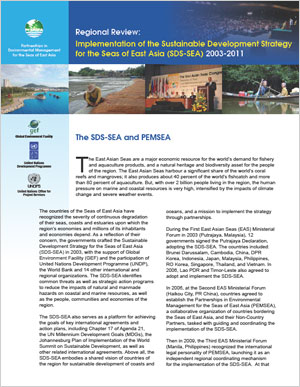
Regional Review: Implementation of the Sustainable Development Strategy for the Seas of East Asia (SDS-SEA) 2003-2011
The SDS-SEA review process commenced in March 2010. All PEMSEA Country Partners and the majority of the Non-Country Partners participated in the process, which entailed: (a) a desktop review of progress and development in support of SDS-SEA objectives and targets in each participating country; (b) a survey of PEMSEA Non-Country Partners to identify initiatives that contribute, directly and indirectly, to SDS-SEA; (c) conduct of national inter-agency workshops to review and validate the country report, and to build consensus on priorities for SDS-SEA implementation in the medium term; and d) finalization of national SDS-SEA progress reports and preparation of an overall summary report for the region. The countries of the Seas of East Asia have recognized the severity of continuous degradation of their seas, coasts and estuaries upon which the region’s economies and millions of its inhabitants and economies depend. As a reflection of their concern, the governments crafted the Sustainable Development Strategy for the Seas of East Asia (SDS-SEA) in 2003, with the support of Global Environment Facility (GEF) and the participation of United Nations Development Programme (UNDP), the World Bank and 14 other international and regional organizations. The SDS-SEA identifies common threats as well as strategic action programs to reduce the impacts of natural and man-made hazards on coastal and marine resources, as well as the people, communities and economies of the region. There has been considerable progress and achievement on the part of participating countries, local governments and a host of collaborating organizations, programs and projects since the adoption of the SDS-SEA in 2003. The good news is that the region appears to be on track to achieving four major targets as spelled out in the Haikou Partnership Agreement (2006) and further elaborated in the Manila Declaration (2009) (Box 1). However, the bad news is that coastal and marine ecosystems of the region are experiencing increasing threats to the services that they provide humanity. Marine pollution from land-based sources continues to be a serious problem, as evidenced by the expansion of hypoxic (dead) zones from increasing nutrient inputs from sewage and agriculture. International commitments made regarding biodiversity and marine protected areas have fallen short of expectations. Depletion of marine waters through overfishing and use of destructive fishing gear/fishing practices continues. On top of it all, the multiple risks and impacts related to climate change and extreme weather events are becoming more evident. In short, the region has not reached that elusive tipping point where reduction in pollution discharges, conservation and rehabilitation of habitats, biodiversity preservation and enhancement and economic stability have begun to shift the balance in favor of sustainable development. The SDS-SEA review process commenced in March 2010. All PEMSEA Country Partners and the majority of the Non-Country Partners participated in the process, which entailed: (a) a desktop review of progress and development in support of SDS-SEA objectives and targets in each participating country; (b) a survey of PEMSEA Non-Country Partners to identify initiatives that contribute, directly and indirectly, to SDS-SEA; (c) conduct of national inter-agency workshops to review and validate the country report, and to build consensus on priorities for SDS-SEA implementation in the medium term; and d) finalization of national SDS-SEA progress reports and preparation of an overall summary report for the region.
